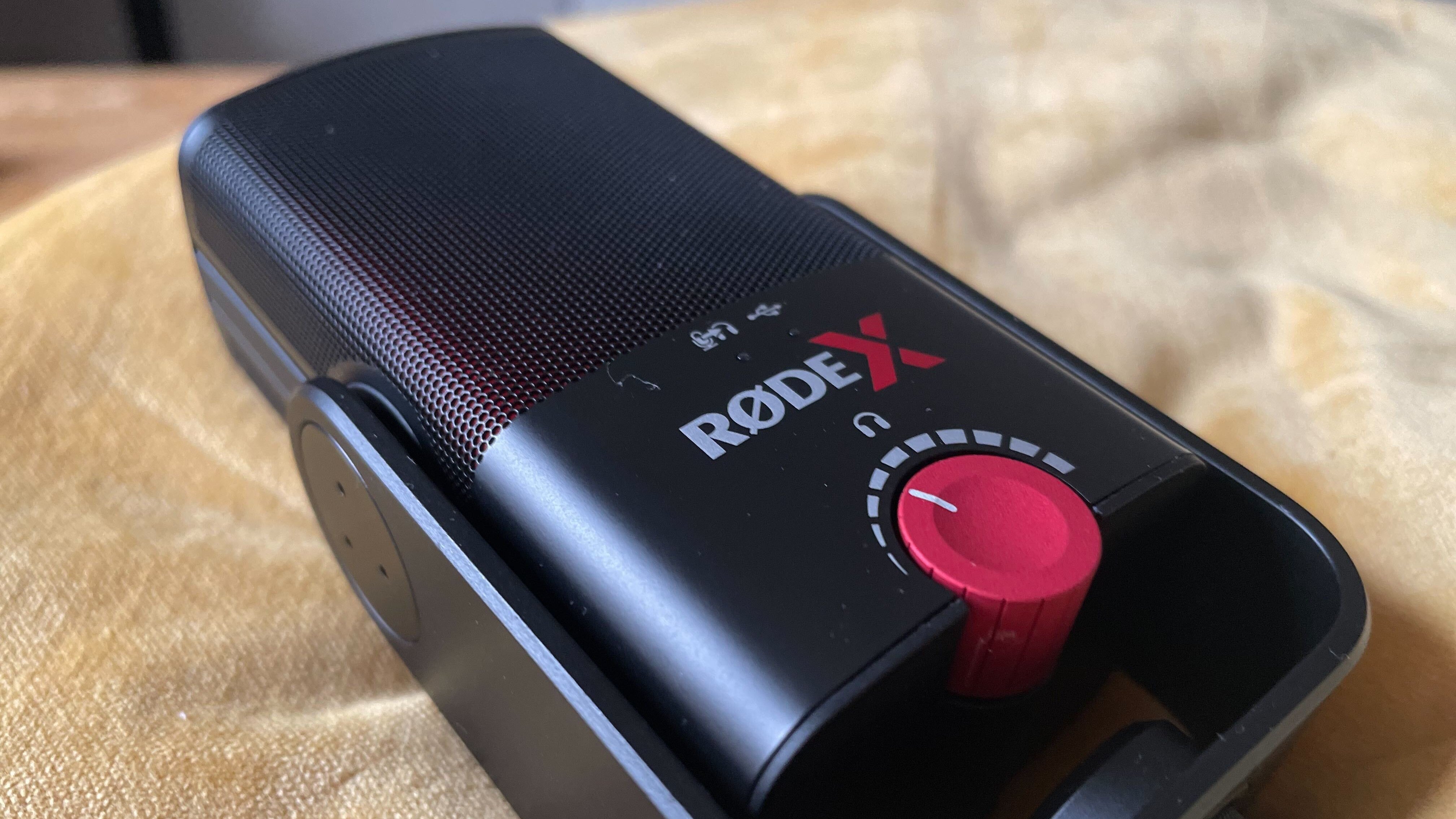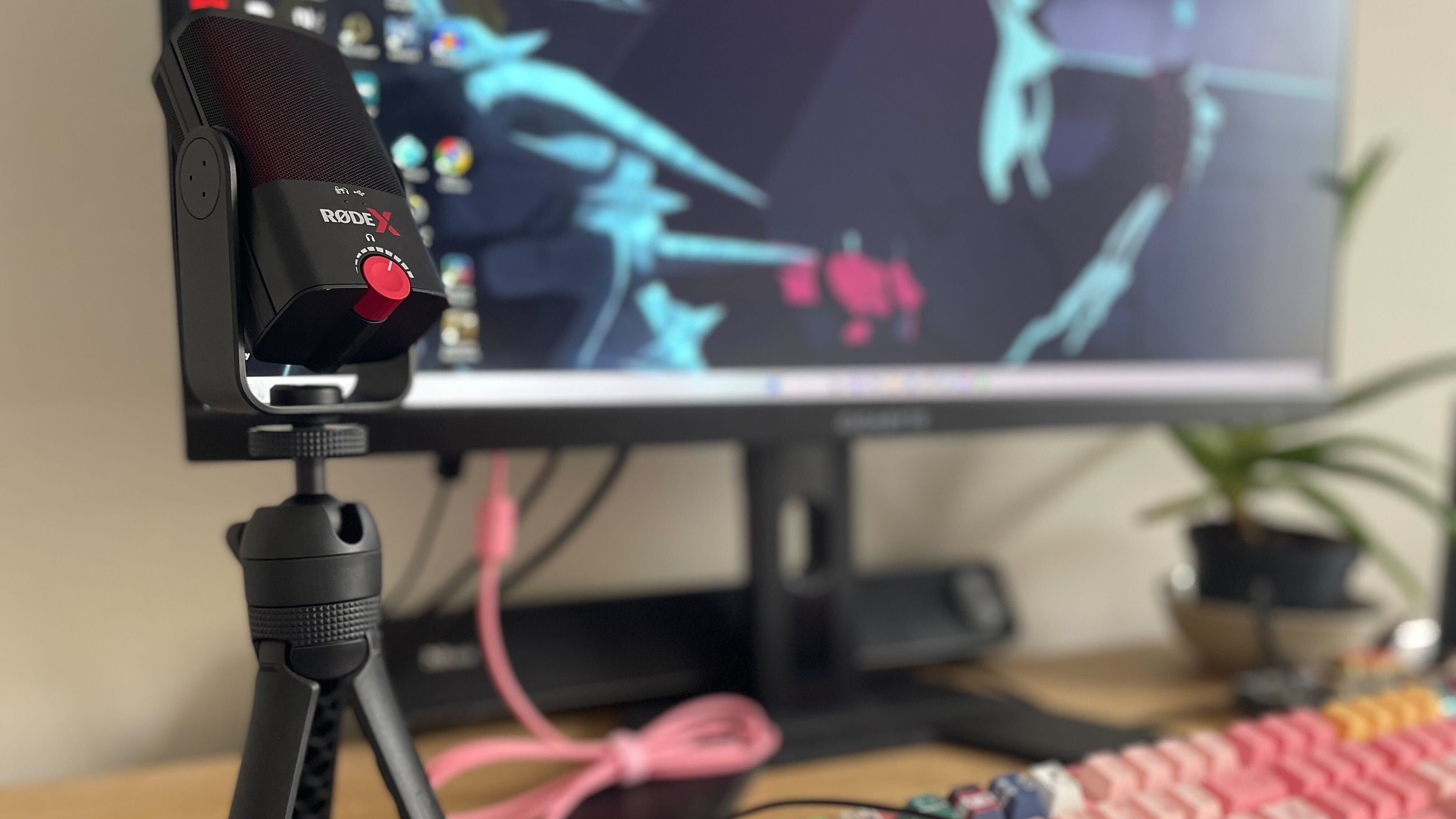TechRadar Verdict
The Rode X XCM50 is a great streaming mic with clear and natural vocals that lends itself to plosive audio. Armed with decent background noise cancellation and a lifetime subscription to Rode X Unify software, there’s not much more you could reasonably ask from this streaming mic.
Pros
- +
Compact size
- +
Full and warm vocals
- +
Zero-latency headphone output
Cons
- -
Tripod takes up a lot of space
- -
Premium price tag
Why you can trust TechRadar
The Rode X XCM50 costs a pretty penny but is worth every cent. This compact travel-friendly mic is packed with features that’ll make your streaming experience so much easier, especially if you’re new to the craft.
The highlights of this mic have to be the outstandingly detailed audio and focused sound. Thanks to the cardioid polar pattern and relatively nice background noise cancellation, you won’t be able to hear the frantic mashing of keys rumbling throughout your stream, as long as you position it correctly.
A relatively new addition, the XCM-50 and the XDM-100 marked Rode’s first entry into gaming peripherals after making its mark as one of the big hitters in the music and podcasting industry for enthusiasts, and it’s safe to say it hasn’t disappointed.
Rode X XCM50: price and availability
- How much does it cost? $148 / £170 / AUS$250
- Where can you get it? Available now in the US, UK, and Australia
Polar pattern: Cardioid pattern
Sample rate: 48kHz
Connection type: USB
Weight: 1.08lb (mic only)
The Rode X XCM50 has a list price of $148 / £170 / AUS$250, which places it in the mid-range of gaming microphones. However, many places are now selling it for a good chunk off the original price.
The other competitors to this streaming mic are the Blue Yeti USB Microphone, which retails slightly cheaper than the XCM-50 at $129.99 / £119.99 / AUS$199.95 and the Razer Seiren V2 X, which is available at $99.99 / £108.99 / AUS$169.95.
Rode X XCM50: design and features

The Rode X XCM50 is a plug-and-play mic, so you can set it up and use it in minutes, which is ideal for a novice fan. I also appreciated having a USB-C port, which gave me much-needed different options.
Using the included Rode X Unify Software that comes with the XCM-50 is a must. It’s easy to download and use, with instructions on the box. For first-time streamers wanting to fine-tune their vocal input, this is a great way to get started.
Sign up for breaking news, reviews, opinion, top tech deals, and more.
The XCM-50 mic in itself is relatively small, being 62 (W) x 42 (D) x 118 (H); this is great for streamers with limited space, such as myself. While the tripod does take up some more space, I used the XCM-50 along with Rode’s PSA1+ Professional Studio Arm, which lifted my mic above my workspace and made the sound quality even better thanks to the mic being further away from my keyboard and mouse.
Lastly, I’d be remiss if I didn’t mention the sleek and cool style of the XCM-50. As someone who takes great pride in their gaming set-up, it was refreshing to have a stylish peripheral that did the job well and looked good doing it. The XCM-50 seems much different from the average streaming mic like the Blue Yeti and Razer Seiren V2 X, trading in the soft pill-like shape for a sharper and cleaner cuboid professional look.
Rode X XCM50: performance

The Rode X XCM50 impressed me immensely when it came to overall performance. Having previously used a handful of streaming gear, finding something that fit my needs was refreshing.
While I record the occasional video and dabble in streaming, it’s by no means my full-time job, so I’ve always hesitated to spend a little extra on my mics, but now I realize that you truly do get what you pay for.
The star of the show are the warm and clear vocals. As someone who probably has too much stress on fricative sounds (s, z, th letters), I sometimes find recordings of myself to sound very harsh. Luckily the XCM-50 gave a warmer ting to my recordings as it softened the fricative sounds and boosted plosive ones instead (p, b, t, g, letters). The premium condenser capsule ensured high-quality recorded audio.

I was also impressed with the background noise cancellation and the cardioid polar pattern that was incredibly focused. If you position your mic correctly (I placed the studio arm slightly above my head and angled it towards my mouth), you won’t have to worry about much background noise from my keyboard and mouse.
The biggest surprise had to be how much I liked the XCM-50’s zero-latency headphone output. After plugging my Turtle Beach Recon 50X headset into it, the audio felt crisper and deeper. The 3D audio was also better when playing FPS games like Overwatch 2 and Call of Duty Modern Warfare 2 remake.
Should I buy the Rode X XCM50?
Buy if...
You want crisp and warm audio
The highlight of this mic was the audio quality. As someone who enjoys streaming and making video content, it was reassuring to have audio quality as good as this.
You want something easy to set up
The Rode X XCM50 is one of the few Rode peripherals that don’t need an interface. The USB connection is excellent for people with less space, a smaller budget, and new to streaming.
Don't buy if...
You’re on a budget
As great as this mic is, it isn’t something you can buy on a whim. A discounted price will help you swallow this rather large pill, but it may be good to shop around before you commit.

Elie is a Features Writer for TechRadar Gaming, here to write about anything new or slightly weird. Before writing for TRG, Elie studied for a Masters at Cardiff University JOMEC in International Journalism and Documentaries – spending their free time filming short docs or editing the gaming section for their student publications.
Elie’s first step into gaming was through Pokémon but they've taken the natural next step in the horror genre. Any and every game that would keep you up at night is on their list to play - despite the fact that one of Elie’s biggest fears is being chased.
